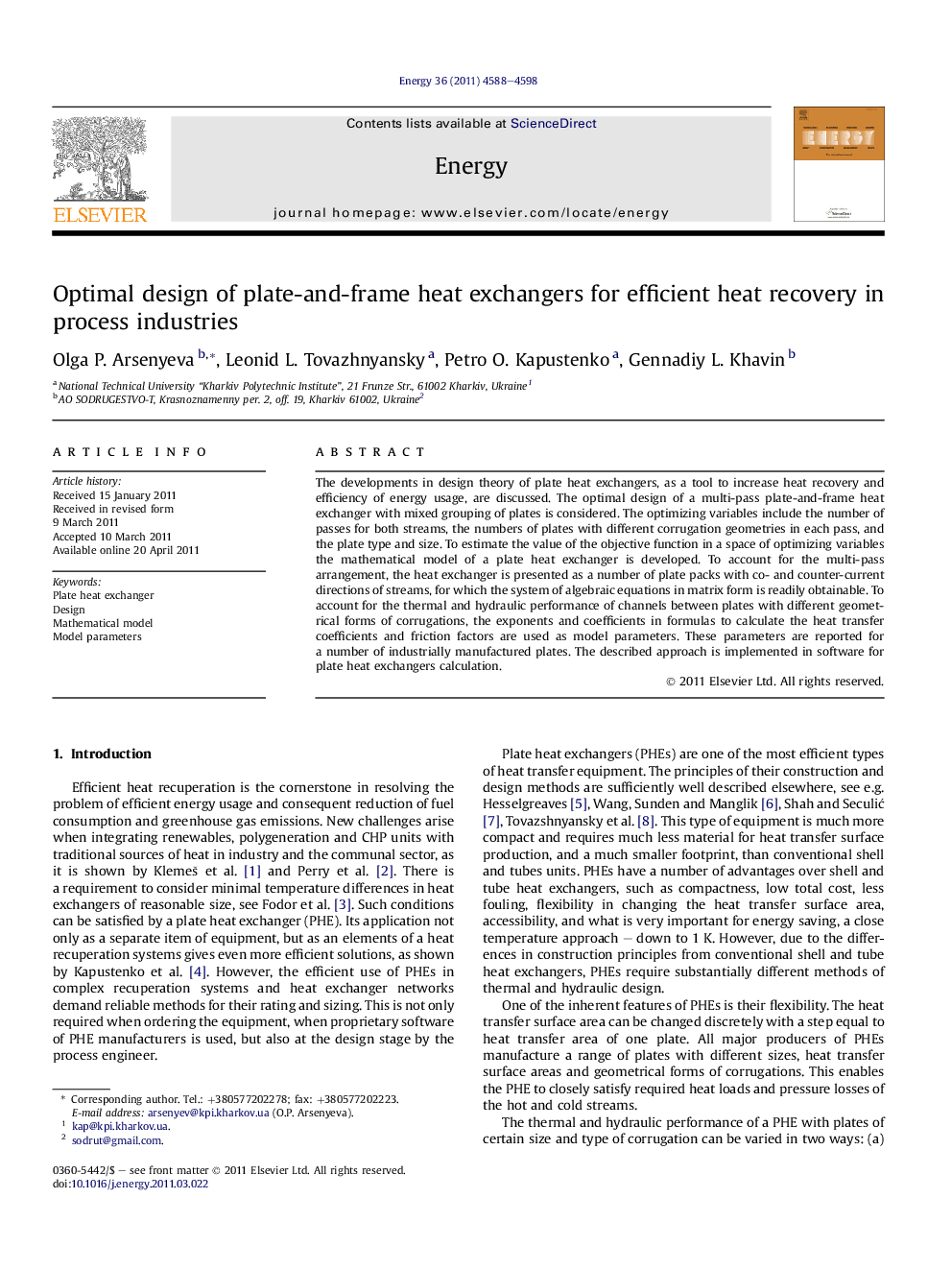| Article ID | Journal | Published Year | Pages | File Type |
|---|---|---|---|---|
| 1734225 | Energy | 2011 | 11 Pages |
The developments in design theory of plate heat exchangers, as a tool to increase heat recovery and efficiency of energy usage, are discussed. The optimal design of a multi-pass plate-and-frame heat exchanger with mixed grouping of plates is considered. The optimizing variables include the number of passes for both streams, the numbers of plates with different corrugation geometries in each pass, and the plate type and size. To estimate the value of the objective function in a space of optimizing variables the mathematical model of a plate heat exchanger is developed. To account for the multi-pass arrangement, the heat exchanger is presented as a number of plate packs with co- and counter-current directions of streams, for which the system of algebraic equations in matrix form is readily obtainable. To account for the thermal and hydraulic performance of channels between plates with different geometrical forms of corrugations, the exponents and coefficients in formulas to calculate the heat transfer coefficients and friction factors are used as model parameters. These parameters are reported for a number of industrially manufactured plates. The described approach is implemented in software for plate heat exchangers calculation.
► The developments in design theory of PHE purposing to increase heat recovery and efficiency of energy usage have been analysed. ► The developed mathematical model of PHE estimates the optimal multi-pass plate-and-frame heat exchanger with mixed grouping of plates. ► The parameters to calculate heat transfer coefficients and friction factors for PHEs with some commercial plates are determined. ► The described approach is implemented in software for plate heat exchangers calculation. ► Two case studies, which illustrate PHEs applications in process industries performed.
